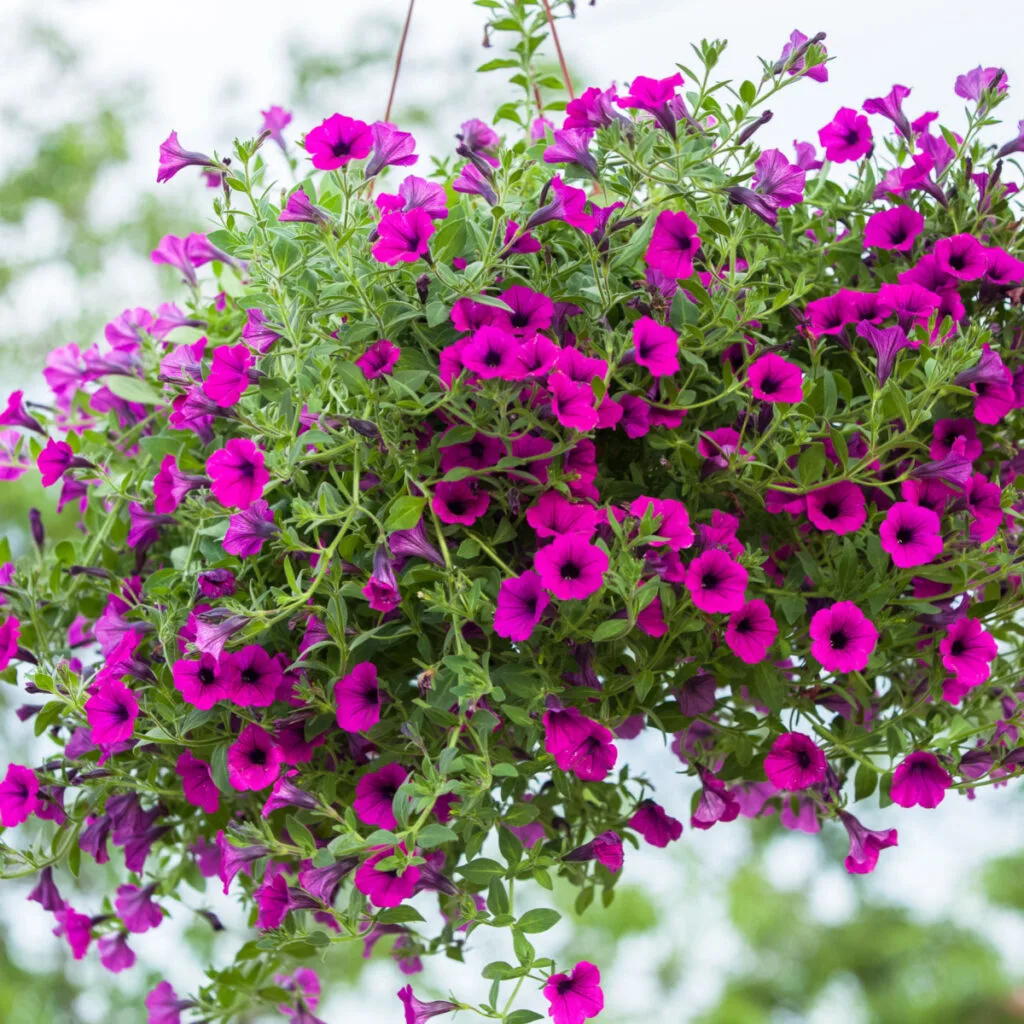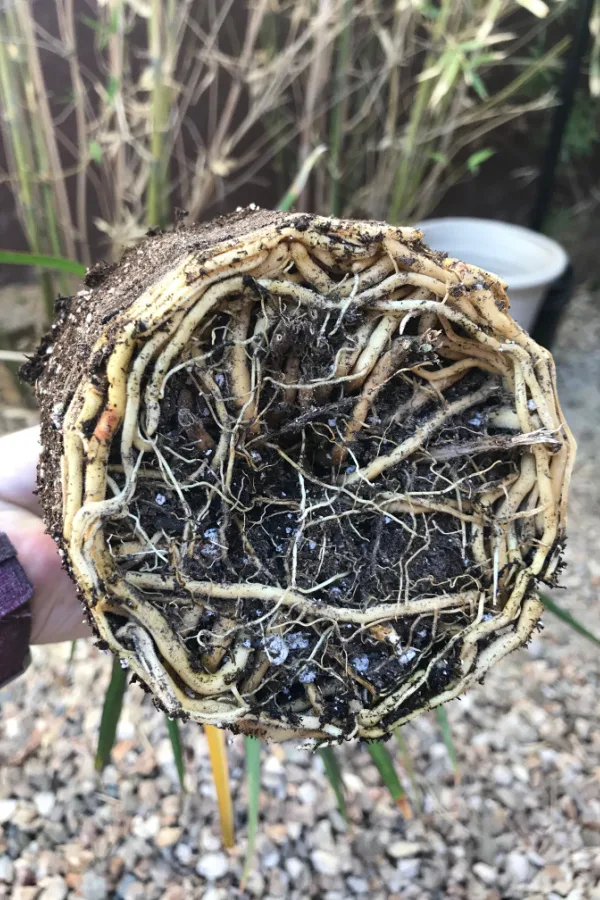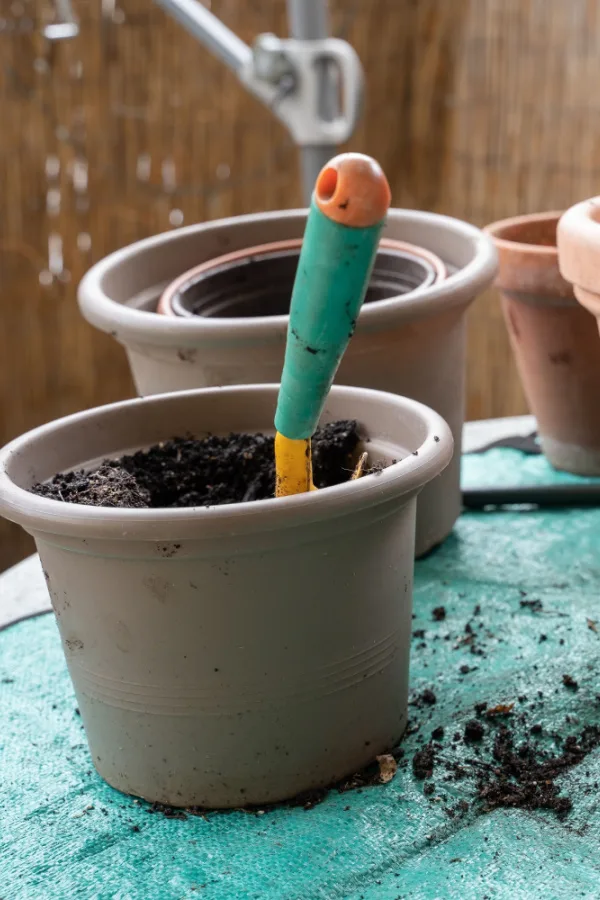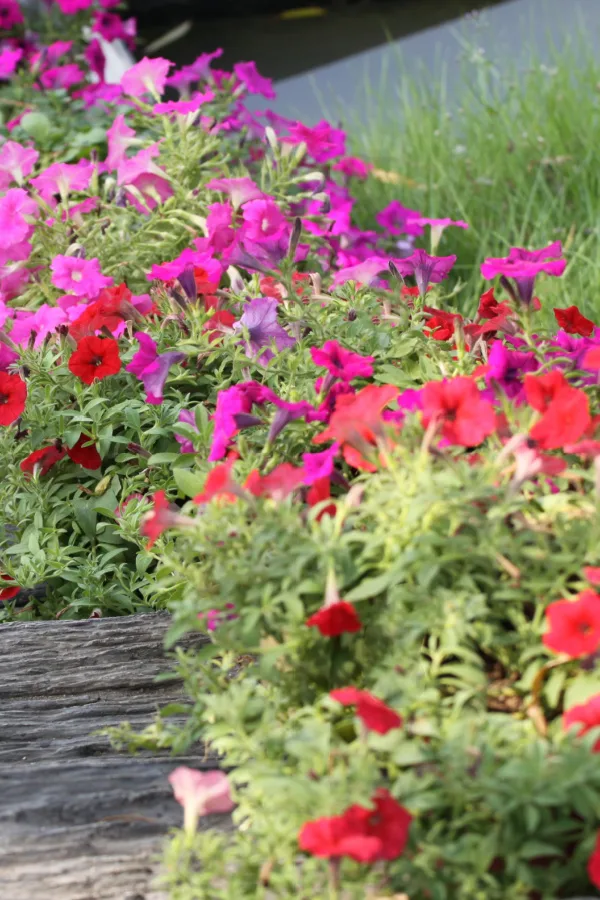Looking for ways to replant and bring your overgrown and scraggly hanging basket plants back to life?
Now that summer is in full swing, you might notice that your hanging basket plants are starting to look less than stellar. Those once thriving and beautiful plants are likely now filled with brittle and overgrown foliage.
While it might be a lack of water and nutrients, there’s usually a simple reason why your overgrown hanging basket plants are now starting to struggle. They have likely just overgrown their current container and have run out of room to thrive.

Plants that grow in the ground usually have plenty of soil and space to grow and expand. However, those that grow in containers and hanging baskets only have a small supply of both soil and available nutrients.
But even though your plants might be overgrown right now doesn’t mean you have to toss them in your compost container. Save your hanging basket plants and give them new life with these 2 simple yet effective methods of replanting!
What Happens To Overgrown Plants
Sure it might sound like a good thing that your hanging basket plants are growing so well that they have overgrown their current container, but what does that really mean? Why are overgrown plants a bad thing?
The main issue with overgrown plants is that their roots have run out of room. This problem is otherwise known as plants being “root bound”.
When plants are root bound, they have essentially taken up all of the available space in the container and have filled it with growing roots. These roots become crowded and overgrown. As this happens, the soil in the container all but disappears.

What little soil is left behind is usually so zapped of energy and resources that it is no longer helping the plant. Another issue with root bound plants are that water and liquid fertilizer have no place to soak into. It simply ends up running right past the roots and out the drainage holes.
No water and no nutrients in very little soil equals big problems for mature and growing annual plants. But all is not lost! Even the most overgrown plant can get a second chance at being gorgeous with one of these two simple solutions.
2 Ways To Replant Overgrown Hanging Baskets
Purchasing hanging basket plants at local garden centers each spring can get super expensive. Just a couple of beautiful spring plants can really cause your pocketbook to take a hit.
Even if you are starting your hanging baskets from seeds, there is still a lot of time and energy wrapped up in producing beautiful hanging basket displays. (See: “How To Grow Your Own Hanging Baskets From Seeds”)
One thing is for sure, you don’t want to give up on those plants halfway through the summer just because of a little overgrowth! Either one of the following solutions is simple to carry out and will allow you to enjoy your hanging basket plants all the way till the first frost!
#1 Replant Into Bigger Containers
By simply replanting your overgrown hanging basket plant into a larger container, you can bring it back to life in short order.

You want to choose a container that is at least 25% larger than its current container. This will give the plants plenty of space for the roots to expand and fill the area. It will also provide the plant with plenty of soil for additional growth.
Begin by removing the overgrown plant from its current container. This is fairly easy to do with root bound plants as they typically just slide out of the container. However, if the roots have grown out through the drainage holes, you may need to trim them before removal.
Once the plant is out, carefully loosen up the roots so they can expand a bit easier once they go into the new container. Add a few inches of brand-new potting soil into the bottom of the larger container. It’s also a great idea to mix in some worm castings and compost at this time as well.
Adding The Plants…
Next, add your plant to the container, spreading out the roots slightly. Before you add more soil, water the roots thoroughly until water drains out of the drainage holes. Then, backfill with the rest of the potting soil, leaving about 2 inches at the top.
Lastly, water the plant well well with liquid fertilizer included. This will help to give the plant instant nutrients that can easily absorb into the plant’s moistened roots. For best results, choose a fertilizer that has a high percentage of phosphorous (P) and potassium (K). (Affiliate Link: Farmer’s Secret Fruit & Bloom Booster Fertilizer)
This will help the plant to re-bloom faster and stronger. Although nitrogen is important for growth, it is phosphorous and potassium that will help power blooms.

#2 Replant Into The Ground
An alternative to repotting is to directly plant your overgrown hanging basket plant into the ground.
Maybe you waited too long and can no longer find a container large enough to repot your plant into. Or maybe you don’t have enough potting soil to fill up a larger container. Whatever the reason, you still have the option to put the plant directly into the ground.
Not only does this option cost absolutely nothing, but you can do it at almost any time during the summer. Pop that plant into your flowerbed, raised bed, or directly into the landscape. The new soil as well as the new growing location will revitalize and bring life to your worn-out hanging basket plant.
How To Transplant Into The Soil
The key to successfully transplanting directly into the soil is to recharge the location where the plant will be going. You can easily do this by making sure to mix in several inches of compost before placing your plant into the soil.

Create a hole that is about 1.5 times the size of the current root ball. Mix in three to four inches of compost into the bottom. This will give the plants a great boost of nutrients after planting to help the roots become established and foliage grow.
Place the plant inside, carefully separating the roots. Backfill with additional soil and water well with a good dose of liquid fertilizer for an immediate boost. Continue to water plants daily or even twice a day depending on how hot it is outside for the first week or two.
Before you know, you will have a thriving and beautiful plant that otherwise might be heading for your compost bin! For even more tips on keeping your hanging baskets blooming big, see our article: The Best Fertilizer To Use For Hanging Baskets – How To Keep Your Baskets Blooming Big!
Follow Our Facebook Page For Even More Great Tips! Simple Garden Life Facebook Page
Simple Garden Life is a website dedicated to keeping gardening fun, simple and enjoyable! We publish two new articles each week along with a new garden podcast episode every two weeks. This article may contain affiliate links.
